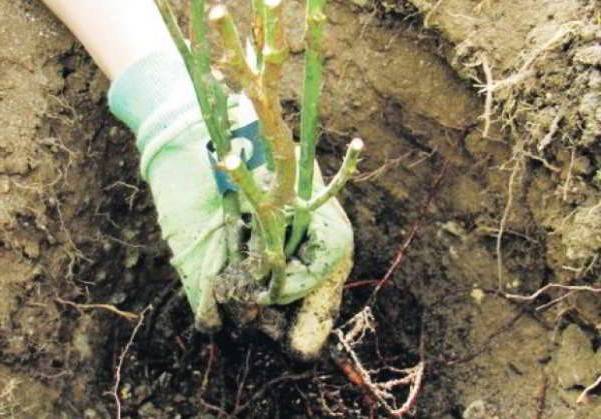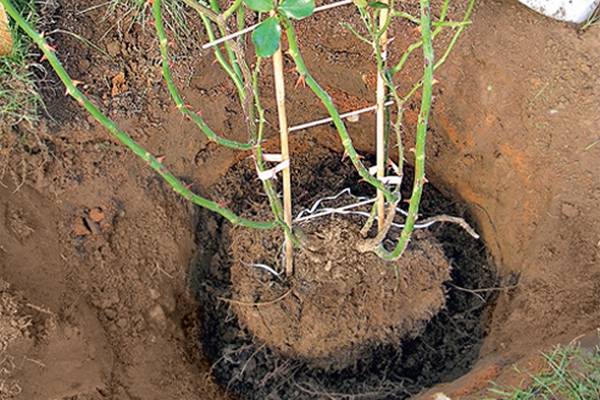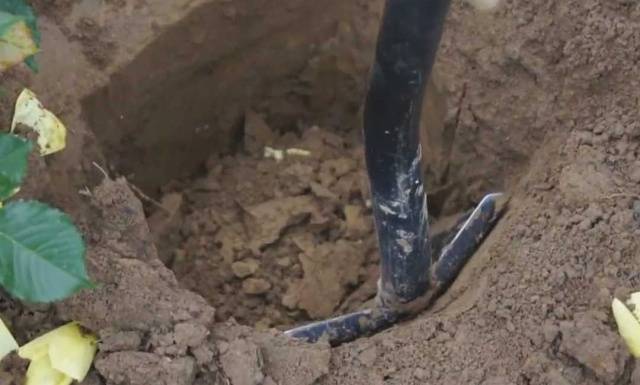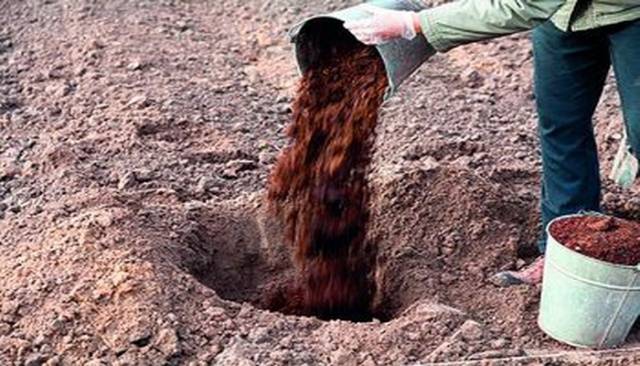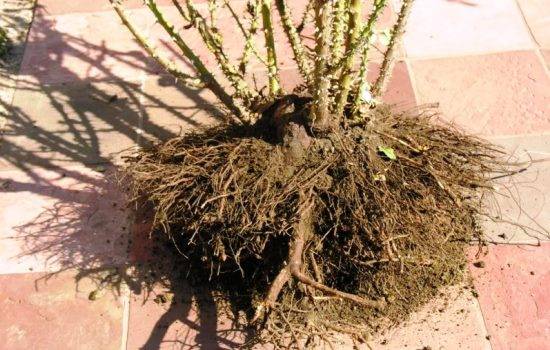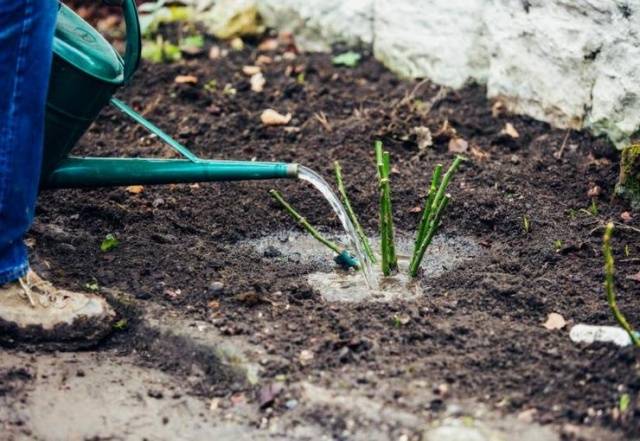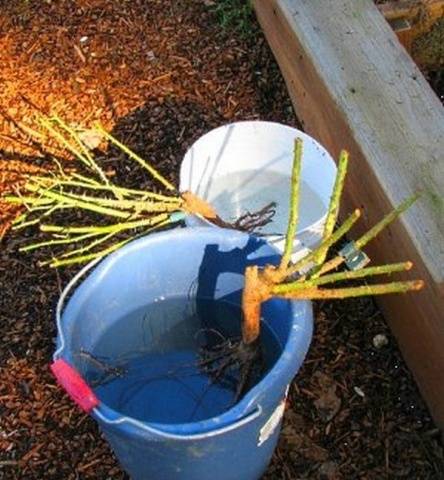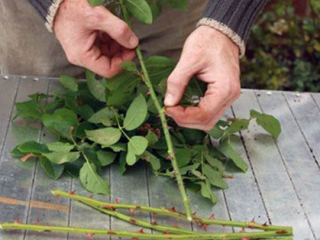Of course, it is best to plant a rose bush once, and then just take care of it and enjoy the magnificent flowers and wonderful aroma. But sometimes a flower needs to be moved to a new location in order to clear the site for a new building, a swimming pool or a playground. It happens that we plant a rose in unsuitable conditions, where it cannot develop normally and bloom profusely. Many landscape projects are initially created as dynamic, and provide for regular redevelopment. Transplanting roses in the fall to another place can be either a forced measure or a planned one - not all owners want to enjoy the same landscape from year to year.
When to replant roses
Let's look at when is the best time to replant roses. In fact, this can be done both in spring and autumn; the recommendations below show not mandatory, but preferred dates for moving bushes to a new location.
Autumn is the best time to transplant rose bushes in regions with mild climates. The soil is still warm and the roots will have time to grow before frost. In the south, roses are finished planting two weeks before temperatures drop below zero.Usually the month of November is the height of excavation work there. Regions with a cool climate require October transplants; in cold conditions, the best time is August-September.
But in areas with low temperatures, it is better to move roses to a new location in the spring. The same applies to places where it rains often, strong winds blow, or the soil is very heavy.
Transplanting roses
It is easiest to transplant roses at the age of 2-3 years. But sometimes it is necessary to move an adult, well-rooted bush. This is difficult to do, but quite possible. We will tell you how to transplant a rose in the fall, correctly and without spending extra effort.
Selecting a location
It is better to plant roses in an open, well-lit area in the first half of the day. It is then that increased evaporation of moisture from the leaves occurs, which reduces the likelihood of the bush being damaged by fungal diseases. It is good if the plot has a slight slope, no more than 10 degrees, to the east or west - spring meltwater does not stagnate in such an area, and the danger of damping off is minimized.
Before transplanting roses in the fall, study their lighting requirements - many varieties cannot tolerate midday sun. Under scorching rays, they quickly fade, the color fades, the petals (especially dark ones) burn and lose their attractiveness. Such roses are replanted under the cover of large bushes or trees with an openwork crown, located at some distance from them so that the roots do not compete for moisture and nutrients.
The flower must be protected from the north and northeast winds, and not placed in deep shade.You cannot transplant bushes to an area where Rosaceae have previously grown - cherry, quince, cinquefoil, irga etc. for 10 years or more.
Almost any soil is suitable for this flower, except swampy ones, but slightly acidic loams with sufficient humus content are preferable.
Digging and preparing roses for transplanting
Before replanting roses in the fall, they need to be watered abundantly. After 2-3 days, dig up the bushes, stepping back about 25-30 cm from the base. Young roses will be easy to get out of the ground, but you will have to tinker with the old ones. First, you need to dig them up with a shovel, then loosen them with a pitchfork, cut off the overgrown roots, and then roll them onto a tarpaulin or into a wheelbarrow.
When replanting in autumn, the shoots are not touched at all or only slightly shortened, all leaves, dry, weak or immature branches are removed. The main pruning of the bush will be carried out in the spring.
But it happens that a rose has been dug up, but the planting site for it is not yet ready. Is it possible to somehow save the bush?
- If you delay replanting for less than 10 days, wrap the earthen ball or bare root with a damp cloth, or better yet, wet burlap or jute. Place it in a shaded, cool place with good air circulation. Check from time to time to see if the fabric is dry.
- If transplantation is delayed for more than 10 days or indefinitely, the roses need to be buried. To do this, dig a V-shaped ditch, lay the bushes there at an angle, sprinkle with soil and compact it slightly.
Preparation of planting holes
It is best to prepare holes for autumn transplantation of rose bushes in the spring. But, let's be honest, you do this very rarely. Try to prepare the place at least two weeks before transplants.
If your plot has good black soil or bulk fertile soil, dig holes to the planting depth, adding 10-15 cm. On depleted, rocky or unsuitable soils for growing roses, prepare a hole with a reserve of about 30 cm. Prepare the soil for filling by mixing in advance:
- fertile garden soil - 2 buckets;
- humus - 1 bucket;
- sand - 1 bucket;
- peat – 1 bucket;
- weathered clay - 0.5-1 bucket;
- bone or dolomite meal – 2 cups;
- ash - 2 cups;
- superphosphate - 2 handfuls.
If you do not have the opportunity to prepare such a complex composition, you can get by with the following:
- turf soil - 1 bucket;
- peat – 1 bucket;
- bone meal - 3 handfuls.
The day before transplanting, fill the hole completely with water.
Transplanting rose bushes
A good time to start working in open ground is a warm, windless, cloudy day.
Transplanting roses with an earthen ball
Place a layer of the prepared mixture at the bottom of the planting hole. Its thickness should be such that the earthen ball is located at the required level.The planting depth is determined by the grafting site - it should be 3-5 cm below the ground level for bush and ground cover roses, and for climbing ones - by 8-10. Self-rooted plants are not buried.
Fill the voids halfway with prepared fertile soil, gently press it down and water well. When the water is absorbed, add soil to the edge of the hole, lightly compact and moisten. After some time, repeat watering - the soil under the transplanted rose should be wet to the entire depth of the planting hole.
Check the grafting site, and if it is deeper than it should be, carefully pull the seedling and add more soil. Plant the rose to a height of 20-25 cm.
Replanting roses with bare roots
Of course, it is best to replant bushes with a lump of soil. But perhaps your acquaintances brought you a rose, dug it up in their garden, or it was bought at the market. We will tell you how to properly replant a plant with bare roots.
If you are not sure that the rose was dug up 2-3 hours ago, be sure to soak it for a day in water with the addition of rooting preparations. The lower part of the bush should also be covered with water. Then dip the root in a mixture diluted to the consistency of sour cream, consisting of 2 parts clay and 1 part mullein.
Pour the required layer of soil onto the bottom of the planting hole, make an earthen mound on it, on which you place the rose. Gently spread the roots around the raised area, avoiding them bending upward. Make sure that the planting depth of the bush corresponds to that indicated above.
Gradually cover the roots with the prepared fertile soil, gently compacting it from time to time. When the rose is planted, tamp down the edges of the hole with the handle of a shovel, and carefully press down inside the planting circle with your foot. Water thoroughly, check the location of the root collar, add soil and hill the bush to 20-25 cm.
Care after transplant
We've told you how and when to replant roses, now we need to figure out whether we can do anything else to help them take root as quickly as possible.
- If you transplanted the bushes late, just before frost, add additional watering.
- In warm, dry weather, water roses every 4-5 days so that the soil is constantly moist but not wet.
- In the northern regions, in the year the bush is moved to another place, be sure to make an air-dry shelter.
Watch the video that describes the intricacies of transplanting roses:
Conclusion
It’s easy to transplant a rose bush to another place; it’s important to avoid serious mistakes. We hope our article was useful and you will enjoy the fragrant flowers of your favorite for many years to come.

